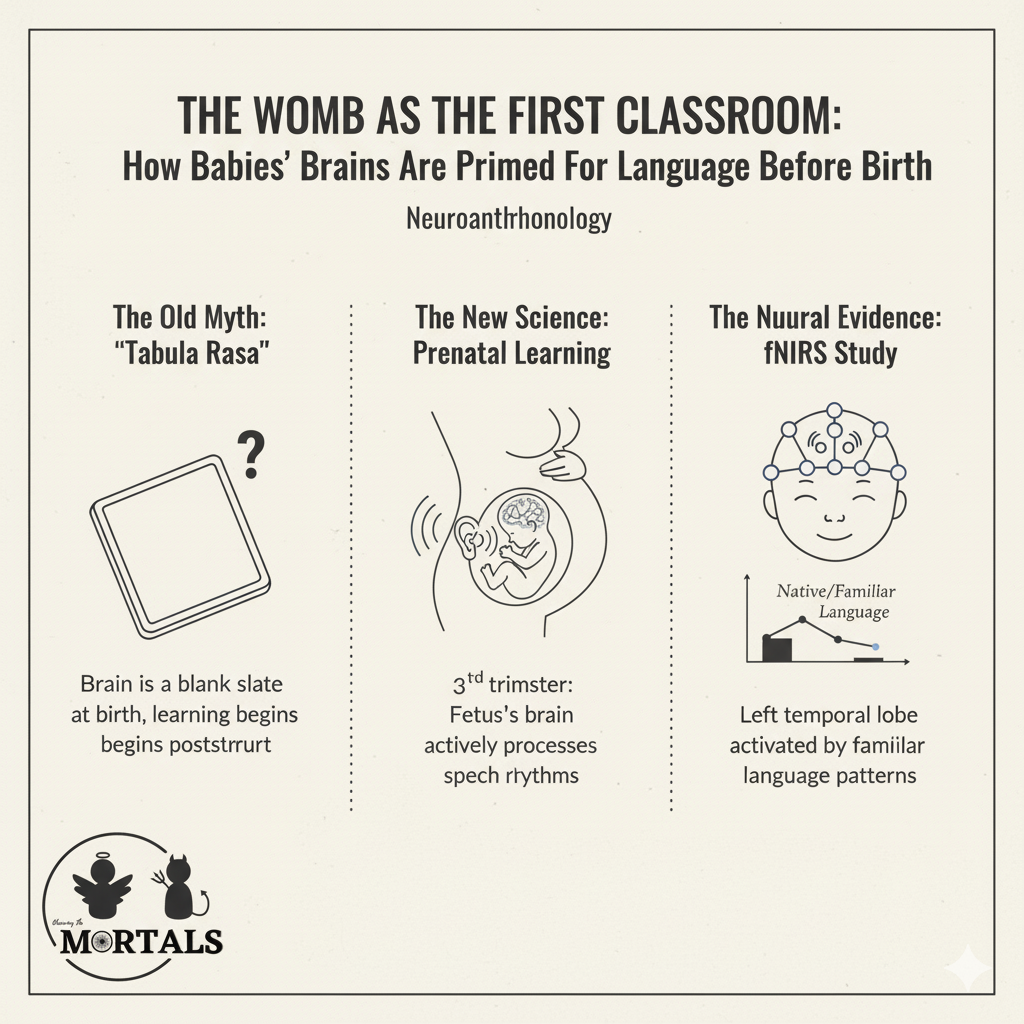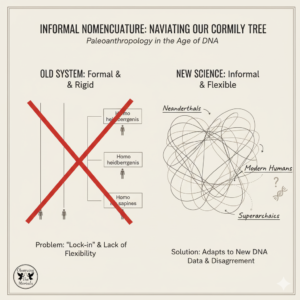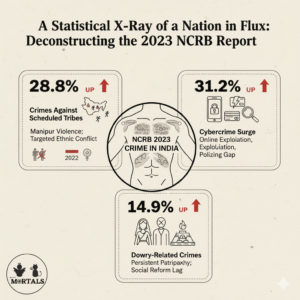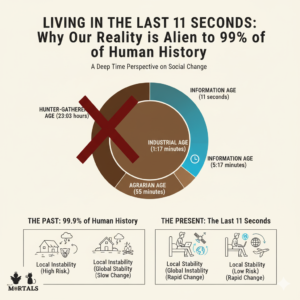For centuries, philosophers and scientists have debated whether the newborn mind is a “blank slate” (tabula rasa), waiting for the world to write upon it. When it comes to language, we’ve long assumed that the learning process begins after birth, with a baby’s first cry, coo, or babble. But a groundbreaking new study from the University of Montreal is pushing this timeline back into the third trimester of pregnancy. Using advanced, non-invasive brain imaging, researchers have provided the first direct neural evidence that a fetus is not just a passive passenger but an active listener whose brain is already being shaped and primed by the languages it hears from the outside world.
The Information Box
Syllabus Connection:
- Paper 1: Chapter 7 (Linguistic Anthropology: Language Acquisition), Chapter 1.7 (The Biological Basis of Life), Chapter 11.2 (Human Growth and Development), Chapter 12 (New perspectives: Neuroanthropology)
Key Concepts/Tags:
- Language Acquisition, Prenatal Learning, Neuroanthropology, fNIRS, Blank Slate (Tabula Rasa), Nature vs. Nurture
The Setting: Who, What, Where?
This case study is based on research published in Nature Communications Biology by a team of neuropsychologists at the University of Montreal. The study involved 60 pregnant people who were native French speakers. One group was asked to regularly play 10-minute recordings of stories in both French and a foreign language (either German or Hebrew) to their fetuses during the final weeks of pregnancy. After birth (between 10 hours and 3 days old), the newborns’ brain activity was monitored using functional near-infrared spectroscopy (fNIRS)—a noninvasive imaging technique that measures blood oxygenation—while they listened to all three languages.
The Core Argument: Why This Study Matters
This research provides the first direct neural evidence for prenatal language familiarity, fundamentally changing our understanding of the earliest stages of human development.
- The Brain is Not a “Blank Slate”: The central finding is a powerful scientific refutation of the tabula rasa theory. The study demonstrates that the brain is not an empty vessel at birth; it has already been shaped and structured by its environmental linguistic input while in the womb.
- From Behavioral Cues to Neural Proof: Previously, scientists knew that newborns could recognize their mother’s voice or language rhythm from indirect behavioral cues (like changes in their sucking patterns). This study is a major leap forward because it uses fNIRS to pinpoint the specific neural mechanism. It showed that the left temporal lobe, the brain’s specialized language processing center, is activated by languages the baby was exposed to in utero, in the same way it’s activated by their native tongue.
- It’s “Familiarity,” Not Fluency: The researchers make a crucial distinction: the babies are not “learning” German in the womb in the way an adult would. Instead, they are developing a neural familiarity with the unique acoustic patterns and rhythms of that language. Their brains are being primed to recognize it as a meaningful language, rather than just random noise. The control group babies, who were not exposed, processed the foreign languages as generic sound, not language.
<h4>The Anthropologist’s Gaze: A Critical Perspective</h4>
- The Nature and Nurture Dance: This study is a beautiful, real-world example of the intricate interplay between nature and nurture. Nature provides the innate biological capacity and brain structures for language (like the left temporal lobe). Nurture, in the form of the specific languages heard in the womb, begins to shape and specialize those innate structures even before birth. It powerfully shows that the debate is not about one versus the other, but about their constant and very early interaction.
- Neuroanthropology in Action: This is a prime case study for the emerging field of neuroanthropology. It uses neuroscientific methods (fNIRS) to answer a fundamental anthropological question: how does culture (in this case, language) literally get “under the skin” and into our neural wiring? It demonstrates that culture begins to shape our biology from the very earliest stages of life.
- A New Baseline for Development: The study’s clinical importance is a key applied anthropology angle. By establishing what a “normally” primed brain looks like at birth, it creates a potential neural baseline. In the future, this could help researchers and clinicians identify the earliest markers for speech and language disorders much earlier than is currently possible through behavioral observation alone, paving the way for earlier and more effective interventions.
The Exam Angle: How to Use This in Your Mains Answer
- Types of Questions Where It can be Used:
- “Critically analyze the process of language acquisition in humans.”
- “The nature vs. nurture debate has been central to anthropology. Discuss with recent evidence.”
- “What is the biological basis of language?”
- Model Integration:
- On Language Acquisition: “The process of language acquisition starts even before birth. A recent 2025 study using fNIRS brain imaging on newborns demonstrated that fetuses exposed to a language in the womb show activation in their brain’s specialized language centers when they hear that language after birth, proving that prenatal familiarity shapes neural networks.”
- On Nature vs. Nurture: “The nature vs. nurture debate is increasingly seen as an interaction, not an opposition. For instance, new research shows that while the capacity for language is innate (nature), the specific linguistic environment in the womb (nurture) already begins to shape the brain’s neural pathways before birth, refuting the old idea of a ‘blank slate’ mind.”
- On New Methods in Anthropology: “New technologies are providing direct neural evidence for anthropological theories. The use of fNIRS on infants to study prenatal language exposure, for example, has moved our understanding beyond behavioral cues to the specific brain mechanisms that underlie the earliest stages of linguistic familiarization.”
Observer’s Take
This study offers a remarkable window into the very first moments of our human journey with language. It proves that the womb is our first classroom, a rich auditory environment where the rhythms and melodies of our future language are already starting to carve pathways in our developing brains. The idea that a newborn is not a “blank slate” but is already a tiny, biased listener, primed by the stories and conversations it overheard, is a profound statement about the deep and early interplay of our biology and our culture. It is a humbling reminder that the process of becoming who we are begins long before we take our first breath.
Source
- Title: Babies’ Brains Recognize Foreign Languages They Heard before Birth
- Author: Meghie Rodrigues
- Publication: Scientific American
- Original Research: “Functional connectivity in the social perception pathway at birth is linked with attention to faces at 4 months” by Katarzyna Chawarska et al. in Biological Psychiatry: Global Open Science.





